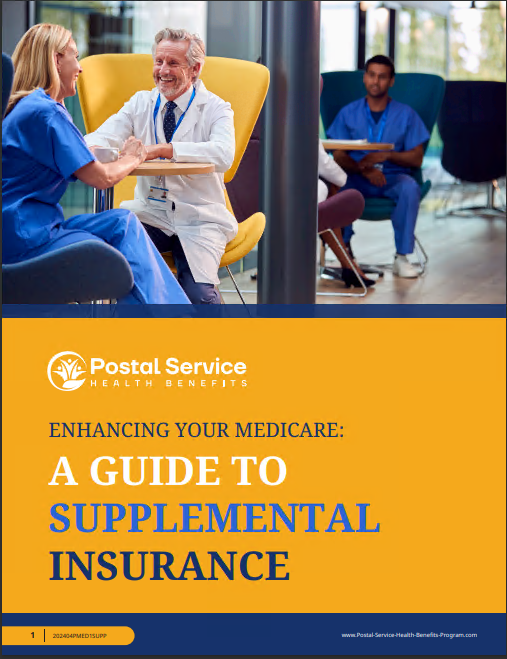Key Takeaways:
- The 2025 changes to the Postal Service Health Benefits (PSHB) program introduce significant updates aimed at improving healthcare options for USPS employees and retirees.
- By planning ahead and understanding the new rules, you can protect your coverage and make the most of these updates.
Navigating the 2025 Healthcare Transition
The transition to the Postal Service Health Benefits (PSHB) program in 2025 is a major overhaul that brings new opportunities—and responsibilities—for USPS workers and retirees. Whether you’re currently covered under the Federal Employees Health Benefits (FEHB) program or are just starting to explore your healthcare options, this change is designed to better meet your needs.
If you’re feeling uncertain about how these changes will affect you, don’t worry. With a little preparation and a solid understanding of the new structure, you can navigate this transition smoothly and take full advantage of the benefits the PSHB program has to offer.
Breaking Down Premiums and Contributions
What You Need to Know About Premiums
For active USPS employees, the good news is that the Postal Service will continue to contribute a large portion of your health insurance premiums. This makes your coverage more affordable compared to private market plans. For retirees, the introduction of Medicare Part B as a mandatory component for most will impact how you plan and pay for your coverage.
The Medicare Part B premium in 2025 is $185 per month. While this is an added cost, the integration with PSHB ensures more comprehensive coverage by reducing out-of-pocket expenses.
Finding the Right Balance
Selecting the right plan involves more than just comparing monthly premiums. Lower premiums often mean higher deductibles and out-of-pocket limits, which can add up if you need frequent care. Conversely, a higher-premium plan might offer better overall value if you anticipate needing specialized services or ongoing treatments.
Take time to assess your healthcare usage over the past few years. Do you visit the doctor frequently? Take multiple prescriptions? These insights will help you choose a plan that minimizes your total annual costs.
Understanding Deductibles and Cost Limits
How Deductibles Work in PSHB
A deductible is the amount you pay out-of-pocket before your plan starts covering costs. Deductibles under PSHB plans will vary, so it’s essential to review these carefully during Open Season. Lower deductible plans typically come with higher premiums, while high-deductible plans might be a better fit if you have minimal medical expenses.
Out-of-Pocket Maximums
Every plan includes an out-of-pocket maximum, which caps the total amount you’ll pay for covered services in a year. Once you reach this limit, your plan covers 100% of further expenses for the rest of the year. Knowing this limit can provide peace of mind, especially if you anticipate needing extensive medical care.
Strategies for Managing Costs
- Use Preventive Care: Many PSHB plans cover preventive services at no extra cost, helping you avoid larger medical expenses down the road.
- Plan for Major Expenses: If you anticipate a significant medical procedure, consider scheduling it for a time when you’ve already met your deductible.
- Set Aside Funds: Use tax-advantaged accounts like FSAs or HSAs to save pre-tax dollars for medical expenses, reducing your financial burden.
Medicare and PSHB: A Unified System
Mandatory Medicare Enrollment for Retirees
Starting in 2025, Medicare Part B enrollment is required for most PSHB retirees. This change ensures that Medicare acts as the primary payer for outpatient services, while PSHB plans cover additional costs. By coordinating these two systems, you’ll enjoy more comprehensive protection against high medical expenses.
Benefits of Dual Coverage
Medicare Part B covers a wide range of services, from doctor visits to outpatient care, leaving PSHB plans to handle secondary costs like copayments and prescription drugs. This setup not only simplifies your healthcare experience but also minimizes your out-of-pocket spending.
Income-Based Premiums
If your income exceeds certain thresholds, you’ll pay a higher Medicare Part B premium. Be sure to factor this into your budget when planning for 2025 and beyond.
Expanded Provider Networks and More Options
Nationwide Access
The PSHB program offers access to a nationwide network of healthcare providers. This is especially beneficial for retirees who may travel frequently or live in multiple locations throughout the year. With a broad range of doctors and facilities to choose from, you’ll have the flexibility to get the care you need wherever you are.
Emphasis on Preventive Care
Preventive services are a core focus of PSHB plans. Regular check-ups, screenings, and vaccinations are often fully covered, helping you stay proactive about your health and catch potential issues early.
Support for Specialized Needs
If you require specialized care, such as treatment for a chronic condition, PSHB plans include options tailored to your needs. Reviewing plan benefits will help ensure you’re getting the right coverage for your situation.
Your Open Season Checklist
Important Dates to Remember
Open Season runs from November 11 to December 9, 2024. This is your opportunity to:
- Enroll in a PSHB plan if you’re not currently covered.
- Make adjustments to your existing coverage.
- Review and compare plan options to find the best fit for your needs.
Changes made during Open Season will take effect on January 1, 2025. Missing this window means waiting another year unless you experience a qualifying life event.
How to Prepare for Open Season
- Evaluate Your Needs: Consider your expected healthcare usage, including doctor visits, prescriptions, and any planned procedures.
- Compare Plans: Use online tools to compare premiums, deductibles, and out-of-pocket maximums across PSHB options.
- Check for Medicare Coordination: If you’re Medicare-eligible, ensure your chosen plan integrates smoothly with Medicare Part B.
- Verify Network Providers: Make sure your preferred doctors and facilities are included in the plan’s network.
Managing Prescription Costs in 2025
New Cap on Out-of-Pocket Costs
Under Medicare Part D, a $2,000 cap on out-of-pocket prescription drug costs will take effect in 2025. This is a significant improvement for those who rely on expensive medications, providing much-needed financial relief.
Tips for Lowering Prescription Expenses
- Choose Generics: Generic medications are often just as effective as brand-name options but come at a fraction of the cost.
- Use Mail-Order Services: Many plans offer reduced copays for prescriptions filled through mail-order programs.
- Stick to In-Network Pharmacies: Filling your prescriptions at network pharmacies ensures you’re paying the lowest possible price.
Why This Transition Matters
Simplified Coverage
By integrating Medicare and PSHB, the 2025 changes streamline your healthcare experience. With Medicare handling primary costs and PSHB plans covering the gaps, you’ll benefit from more seamless coverage.
Financial Predictability
With clear limits on out-of-pocket costs and comprehensive coverage options, the PSHB program helps protect you from unexpected medical expenses. This financial stability is especially important for retirees living on fixed incomes.
Tailored Plans for USPS Workers
Unlike the broader FEHB system, the PSHB program is specifically designed with postal employees in mind. This targeted approach ensures that your unique healthcare needs are met more effectively.
Staying Ahead of the Changes
The 2025 Postal Service Health Benefits program isn’t just an update—it’s a chance to rethink how you manage your healthcare. By understanding the changes and planning ahead, you can protect your coverage, control your costs, and make informed choices that benefit you and your family.
Use Open Season to review your options, adjust your plan, and set yourself up for a healthier future. With the right preparation, the PSHB program can be a valuable tool for navigating your healthcare needs in 2025 and beyond.






